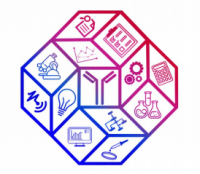Difference between revisions of "AdUp Sense 2019"
Techsensus (talk | contribs) |
Techsensus (talk | contribs) |
||
| Line 1: | Line 1: | ||
| − | [[File:Adup_sense_logo.PNG|200px|thumb|right|Logo of | + | [[File:Adup_sense_logo.PNG|200px|thumb|right|Logo of AdUp Sense]] |
== AdUp Sense 2019 == | == AdUp Sense 2019 == | ||
Revision as of 15:34, 19 August 2020
Contents
AdUp Sense 2019
AdUp Sense is a team from the Uppsala University competing in SensUs 2019 event. For SensUs 2019, AdUp Sense investigated the possibilities for creating a biosensor which is able to measure the concentration of Valproate. The full TRD can be found [ via this link]
Method
A system consisting of graphene oxide (GO) coated screen-printed electrode (SPE) modified with a capture antibody specific for Humiran is used. Surface modification, as well as antibody binding events, lead to changes in the electrochemical properties of the electrode surface which can be used to determine the analyte concentration.
Molecular Recognition
The graphene oxide covered working electrode is activated using EDC/NHS chemistry. Unreacted active sites are then quenched with the addition of 4 μl of 0.5% BSA. An analyte sample is then added onto the electrode surface and allowed to incubate for 30 minutes. The electrode is then rinsed with PBS solution. Finally, a redox couple such as potassium ferrocyanide/ferricyanide is applied onto the electrode to enable a proper measurement.
Physical Transduction
Differential pulse voltammetry (DPV) is used for the readout and an equimolar mixture of the potassium ferricyanide/ferrocyanide redox couple acts as a probe for the signal generation. The current is measured as a function of time and potential between the indicator and reference electrode. As the potential increases towards the redox potential of the probe, it starts undergoing redox and a current up to a peak value is produced. The current is subsequently brought into a diffusion-controlled state and as a result, the total current response takes its shape as a peak. The immunocomplex restricts the surface availability for the redox probe, which lowers the number of redox events and therefore reduces the current signal. Measurements are performed after the immobilization procedure to achieve a baseline which is compared to the signal obtained after analyte incubation on the electrode. Samples with known concentrations of the analyte are used to prepare a calibration curve which can then be used to quantify the amount of the analyte in an unknown sample.
Cartridge
The screen-printed electrodes are disposable. Incubation of the sample on the electrode is performed outside of the potentiostat. The sample is applied by the technician on the tabletop after which the sample is incubated in a sealed container in 4 degree celsius. After sample incubation, the electrode is manually washed off with PBS into a waste container. The electrode is inserted into the adapter on the potentiostat and quantification can be performed. After running the measurement, the electrode can simply be discarded into biological waste. The electrode chips could potentially be regenerated and therefore, reused.
Reader Instrument
The size of the biosensor is 95mmx75mmx75mm. It consists of a sealed potentiostat and an electrode chip. The only handling required by the user is related to the electrode chip. The output of the measurement can be viewed and analyzed with the PSTrace software (PalmSens). The data from known concentrations of the analyte can be used to externally produce a calibration curve which can then be used to infer the analyte concentrations of an unknown sample based on peak differences. Additionally, an app has been developed which can measure the raw data in real-time during the measurement using Bluetooth. The data obtained can be automatically converted to the concentration of adalimumab in blood. The app provides graphs on current and past measurements, making the interpretation of the optimal drug usage straightforward to assess.
Prizes
None
